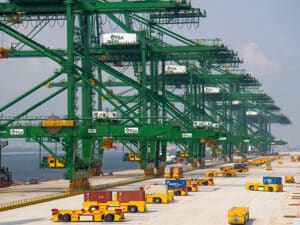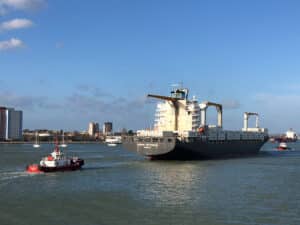
Op-Ed: A new way to power up clean technology’s impact
Written by
Nick Chrissos, Chief Digital & Information Officer, Silverstream Technologies
By Nick Chrissos, Chief Digital & Information Officer, Silverstream Technologies
We are all familiar with the solutions that will enable shipping to decarbonize. Alternative fuels, optimization improvements and, of course, clean technologies, are all finding their place and role in enabling the maritime energy transition. Meanwhile, advances in the industry’s digitalization pathway are also reshaping the way that the sector does business and makes decisions.
We are moving from seeing data as a “nice to have” and instead are recognizing it as a catalyst for driving industry transformation. In this respect, shipping is following the well-established path of other sectors that have successfully adopted digital technologies and harnessed their potential for business advancement.
These two trends—decarbonization and digitalization—are well-debated and discussed. The tremendous increase in column inches dedicated to these topics over the last few years is testament to how important they are to the industry’s future.
Less well understood, though, is the deep link that decarbonization and digitalization have with each other. The boom in voyage optimization platforms over the last couple of years—many of which are designed to bring the industry’s sometimes competing profit and environmental motives into closer alignment—is really only scratching the surface of what’s possible.
For example, few yet understand the growing, important relationship between digitalization and clean technology. The truth is that the former has the power to tremendously change the impact of the latter.
The key change is the fact that we are now transitioning from an era where data was collected and stored passively, often leading to valuable insights being overlooked or forgotten, to a phase where data can be actively leveraged for improvement purposes.
This will benefit clean technologies as well. Because these technologies are deeply integrated into the fabric of a vessel, there is the potential for them to identify and unlock efficiencies that we collectively didn’t know existed. As sources of data for vessel performance, clean technologies can become active and intelligent solutions to maximize the performance of a ship.
More broadly, the same types of data that the industry is using to optimize its operations will also be used by clean technology manufacturers to raise both the floor and ceiling of fuel savings potential. Like the intelligent systems in modern cars that tune the vehicle’s engine as it drives, maritime clean technologies will learn and respond to their environment and operate in a way that ensures maximum efficiencies.
This is important from a lifecycle perspective because, in the next few years, owners and operators are faced with the prospect of making investment decisions that will carry them through to near, or around, the end of the IMO’s current decarbonization mandate in 2050. They can invest in proven clean technologies safe in the knowledge that these solutions will improve over time, if they are backed by robust data utilization.
Optimizing clean technologies even further will require trust in the machine learning—and soon to be artificial intelligence—systems that underpin them.

Secondly, and more significantly, shipping will have to change its technology outlook. Currently, technology—whether physical or digital, traditional or innovative—is generally seen as a means to fulfill the requirements of today, not to anticipate the future.
We must continue to elevate our thinking about what proven technologies can do for ships, and develop a holistic vision of their impact. Fuel bills are cut, and emissions are reduced, certainly, but these technologies can be an even deeper enabler of change for shipping companies.
However, thinking about clean technologies in this way will require two key shifts in sentiment for shipping. Firstly, we will have to become comfortable with humans being removed from active decision-making on some tactical elements of ship operation. The systems and algorithms that will power up vessel efficiency and clean technology impact (and, indeed, routing, navigation, berthing and more) are already at the point where they use more information than a human can comprehend.
For Silverstream’s part, the integration of our air lubrication system within the vessel’s ecosystem provides us with unparalleled insights into a ship’s hydrodynamic performance. We can harness data from Silverstream’s system, as well as multiple sensors around the vessel, to gain an in-depth understanding of air lubrication technology and identify factors that could influence the ship’s overall performance.
Our air lubrication system (ALS) has the potential to achieve even greater performance with the implementation of advanced data analysis techniques. By incorporating artificial intelligence and machine learning, we can transform a multitude of environmental and operational indicators such as weather, water conditions, speed, load, and route into valuable insights that can be used to optimize the behavior of our ALS.
By connecting this capability to our global platform, we can generate insights not only based on a single ship, but on an entire fleet of vessels. This allows for the exchange of learnings and best practices that have never been evaluated at a fleet level before, resulting in a wealth of valuable insights for our customers.
It is clear that the next phase of the industry’s digitalization journey is going to have a transformative impact on its decarbonization pathway. By utilizing data as a lever for enabling business change and decision-making, we’ll be able to power up clean technology impact across the global fleet and for the full lifecycle of a vessel, combining new technologies in novel ways to tackle some of the industry’s very biggest challenges.




